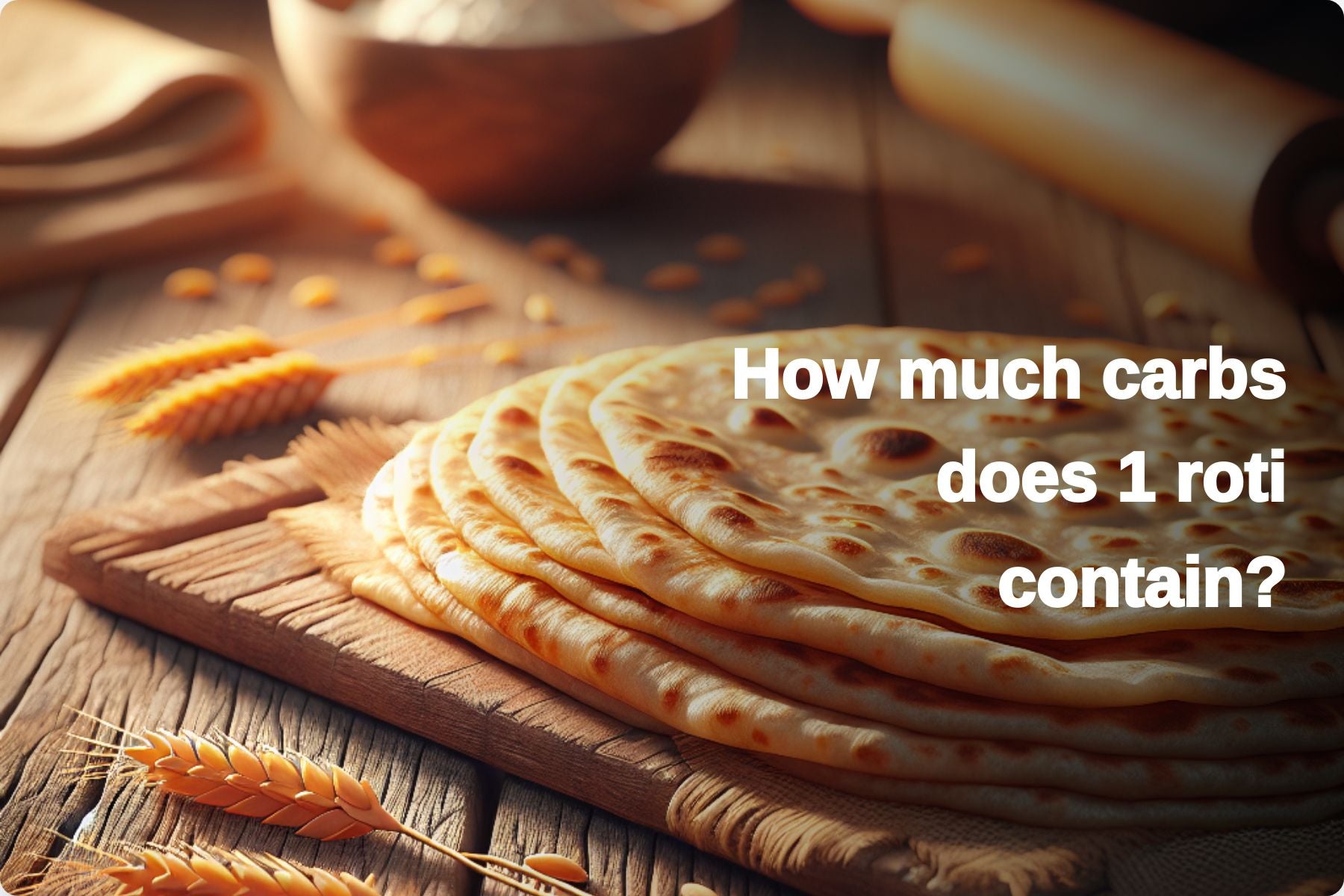
How much carbs does 1 roti contain?
In the world of food and health, paying attention to what we eat is crucial for staying healthy. Carbohydrates, an important type of food, are especially important to keep an eye on. In this exploration, we're going to look at the carbohydrate content of a common Indian food - the roti.
Roti is a flatbread that holds a special place in Indian cooking and is often found on our dinner tables. There are different types of rotis, each adding to the variety of flavors in our diverse food culture. From the regular wheat roti to the less common jowar and ragi variations, these flatbreads are not just for filling our stomachs but also show the different tastes from various regions.
Understanding how many carbohydrates are in these rotis is important for making smart food choices. Carbohydrates are what our body mainly uses for energy, and knowing how much we're eating helps us balance our nutrition. As we go through this journey, let's uncover the facts about the carbs in different types of roti, discovering the nutritional details that make each one special.

Nutritional chart of 1 Whole Wheat Roti
Nutrient |
Amount per Roti (approx. 40g) |
|---|---|
Calories |
120 kcal |
Carbohydrates |
18g |
Dietary Fiber |
3g |
Sugars |
0g |
Protein |
3g |
Fat |
3g |
Saturated Fat |
0.5g |
Cholesterol |
0mg |
Sodium |
2mg |
Potassium |
70mg |
Calcium |
10mg |
Iron |
0.9mg |
Alternative Rotis: Jowar and Ragi
Nutrient |
Whole Wheat Roti (40g) |
Jowar Roti (40g) |
Ragi Roti (40g) |
|---|---|---|---|
Calories |
120 kcal |
120 kcal |
130 kcal |
Carbohydrates |
18g |
22g |
27g |
Dietary Fiber |
3g |
3g |
2.7g |
Sugars |
0g |
0g |
0g |
Protein |
3g |
3g |
3g |
Fat |
3g |
1g |
1g |
Saturated Fat |
0.5g |
0g |
0g |
Cholesterol |
0mg |
0mg |
0mg |
Sodium |
2mg |
1mg |
1mg |
Potassium |
70mg |
130mg |
130mg |
Calcium |
10mg |
8mg |
100mg |
Iron |
0.9mg |
1mg |
1.5mg |
Factors Influencing Carbohydrate Content
The amount of carbs in our chapatis can depend on different things. Knowing about these things can help us make better food choices.
One important thing is how big the chapati is. Bigger chapatis usually have more carbs. If you're keeping an eye on your carb intake, choosing smaller chapatis can be a simple but good idea.
The thickness of the chapati also matters. Thicker chapatis usually have more dough, which means more carbs. Figuring out the right thickness for your taste and health goals can be a thoughtful decision.
How we cook the chapati can change the carb levels too. Dry roasting and frying are two ways to cook chapatis, and they can affect the carb content. Dry roasting keeps the original ingredients, while frying can add more fats and calories.
If you're keen on managing your carb intake, thinking about all these things together is helpful. Going for smaller, thinner, and dry-roasted chapatis can be a smart choice.
It lets you enjoy this common food while keeping in line with your health goals. Thinking about the right thickness or how you cook the chapati can give you useful information.
It helps you make choices that not only match your taste but also contribute to a balanced and carb-conscious diet.

Making mindful choices
Being aware of what we eat is important for staying healthy. Whether it's the common wheat roti or the different jowar and ragi versions, each has its own set of nutrients that we should know about. Knowing how many carbs they have helps us pick what's best for us.
A regular wheat roti has about 15-20 grams of carbs, while options like jowar and ragi have a bit fewer carbs and more nutrients. The size, thickness, and how they are cooked also affect how many carbs they have. Carbs aren't just for energy; they're about choosing what's right for our bodies and tastes. If you want to manage your carb intake, going for smaller, thinner, and dry-roasted rotis can be a smart choice.
Whether it's the familiar wheat roti or the healthier jowar and ragi options, each one plays a part in keeping us well. Let's be mindful of what we eat. Knowing the carb content in different rotis is a small but meaningful step toward a healthier life.
FAQs
-
How many carbs does one roti have?
One roti typically contains about 15-20 grams of carbohydrates, depending on the size and thickness of the roti.
-
Are rotis high in carbs?
Rotis are considered a moderate source of carbohydrates. While they do contain carbs, they are often part of a balanced meal that includes other nutrients.
-
Can I reduce the carbs in a roti?
To reduce the carb content in a roti, you can opt for whole wheat flour or mix in other grains like millet or barley flour, which can increase the fiber content and reduce the net carbs per roti.
This Blog post is an initiative by Lo! Foods, to provide accurate and Nutritionist / Doctor approved information related to Health. Lo! Foods is India's leading brand for Everyday Functional Foods. Foods designed for specific Health conditions or Needs. Lo! Foods also runs India's largest range of Low Carb Healthy Cloud Kitchens, under the brand names of Lo!, ProteinChef, ATH (All Things Healthy) and DiabeSmart.



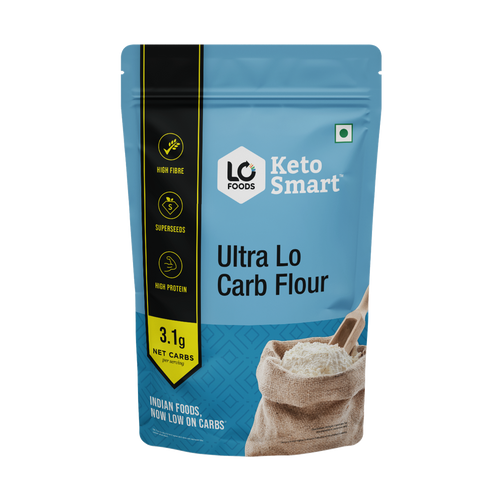
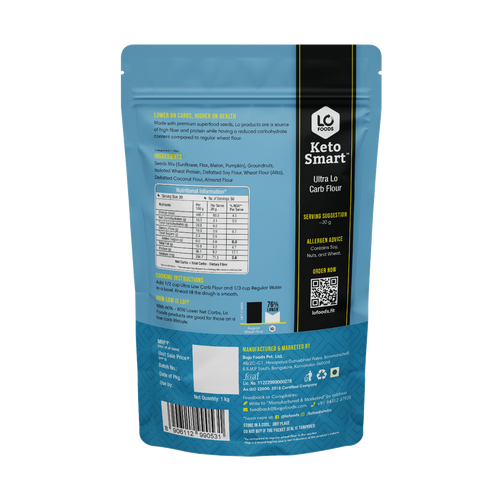
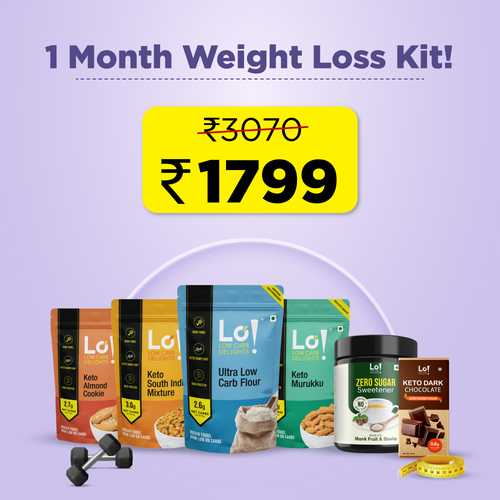
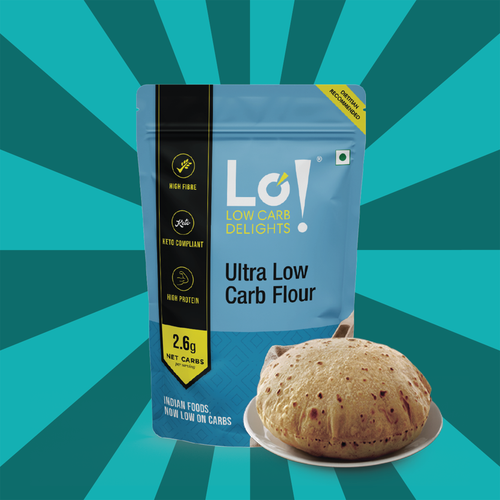


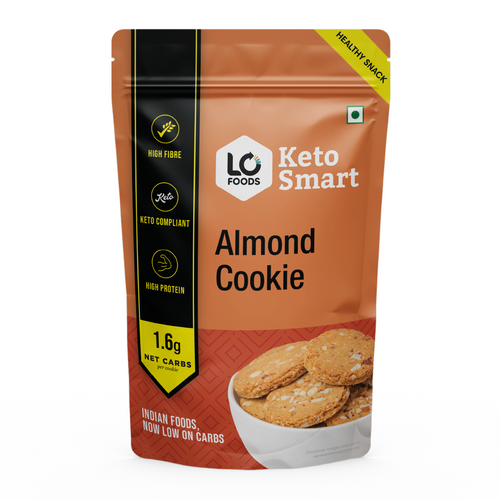





Leave a comment
Your email address will not be published.